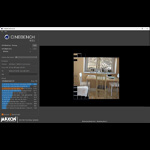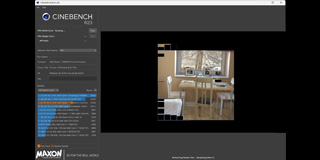
Beyond the obvious gaming applications, today’s virtual reality technology is perfect for watching VR video.
At one end of the scale, VR can make it feel like you’re sat in your own personal cinema, watching a 20-foot-wide virtual screen. At the other, VR videos can transport you into the screen itself, where you can enjoy a story unfolding all around you.
The VR and 360 video content currently being showcased on YouTube and Facebook is perfect for virtual reality headsets and VR-ready PC systems. It can deliver some amazing experiences too, taking you to into the heart of an active volcano, skydiving with the GoPro Bombsquad, even whisking you to the icy surface of Pluto, three billion miles from the sun.
But there’s an important difference between the two formats.
It starts with 360 video
Facebook defines a 360 video as a video that “is created with a camera system that simultaneously records all 360 degrees of a scene. Viewers can pan and rotate a 360 video’s perspective to watch it from different angles.”
As we’ve seen, there are some great examples of this and 360 video has some fabulous potential — YouTube launched 360-degree live streaming and spatial audio in April 2016. It’s also surprisingly easy to create your own 360-degree content with consumer-friendly cameras such as the £300 Ricoh Theta S and the £200 LG 360 Camera.
But while you can watch a 360 video with a VR helmet on (eliminating the need for fiddly mouse navigation), it isn’t VR. Yes, these ‘flat’ videos are easy to create and yes, they can be effective, especially when using a smartphone-based VR system like Google Cardboard. But they are a stepping stone towards the far more immersive VR video experiences to come.
It ends with VR video
In fact, true VR videos are already available, albeit it thin on the ground. They differ from 360-degree videos in several key respects. “As you start incorporating features like 3D, stereo 360, and spatialized sound, then you have something you really get lost in, and feel like you’re present in that space,” Aaron Koblin, CTO of VR startup Vrse told The Verge.
Download the Vrse app and you can experience one of the company’s short films in virtual reality. You can feel the difference. Invasion! is one of the best examples, a 3D VR experience that puts you right at the centre of a story featuring a cartoon rabbit facing an alien menace.
More recently, the Penrose Studios-produced animation, Allumette, has also garnered rave reviews.
VR video is the future
The importance of 360 videos shouldn’t be underestimated. After all, they are a cheap and easy way to give people a VR-like experience.
But virtual reality technology is capable of so much more. Once filmmakers wrap their heads around the technical challenges, VR-ready systems could become the 3D cinemas of the future, offering an amazing active viewing experience rather than the blinkered passive one that hasn’t fundamentally changed in over 100 years.
Experience these VR video adventures with SAPPHIRE VR-Ready graphics cards.
















